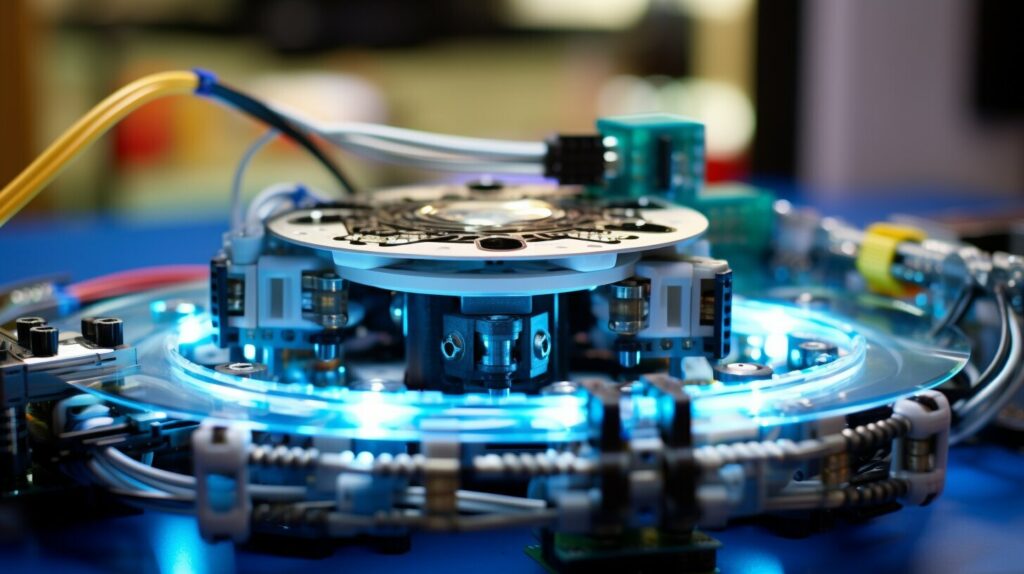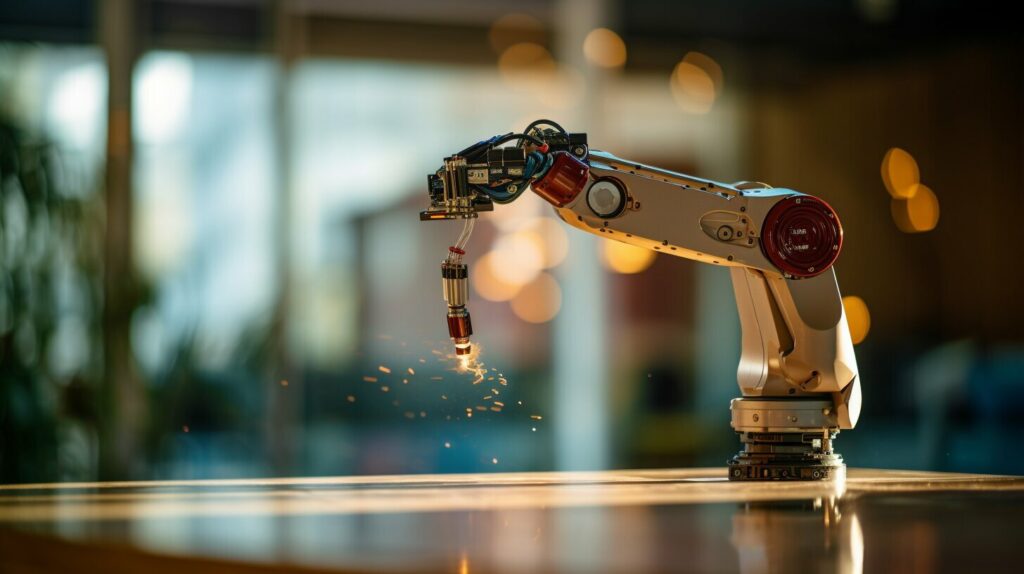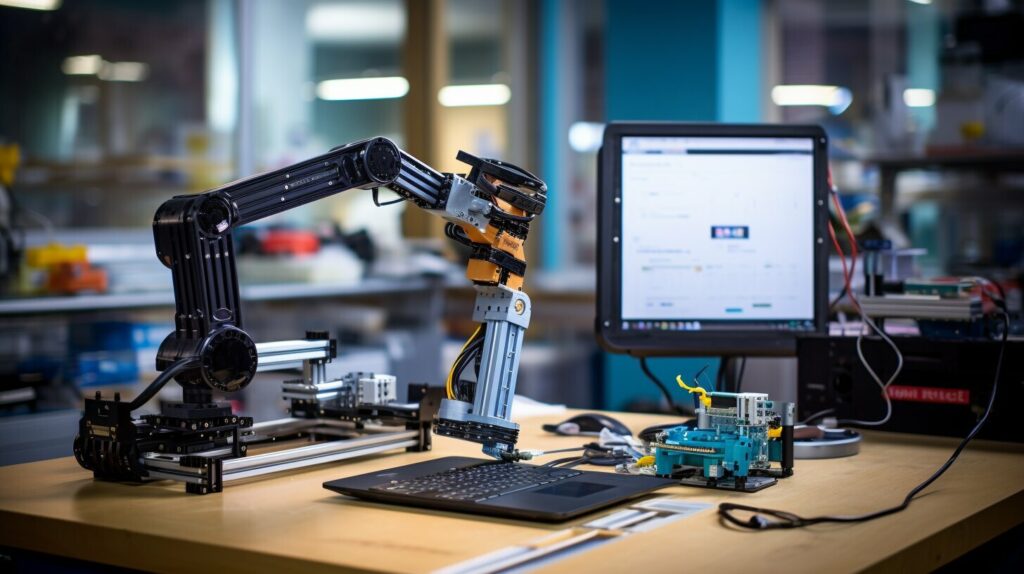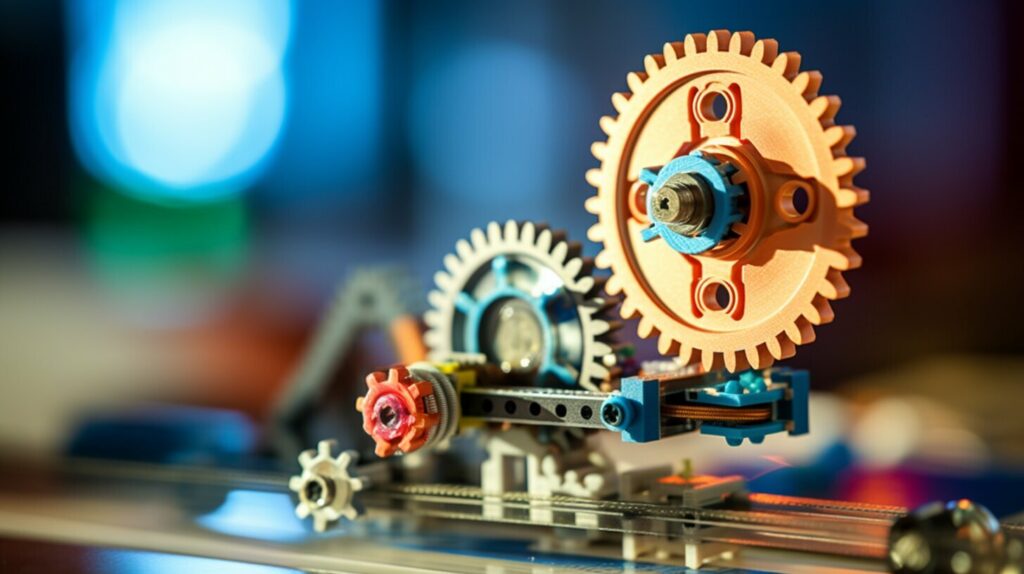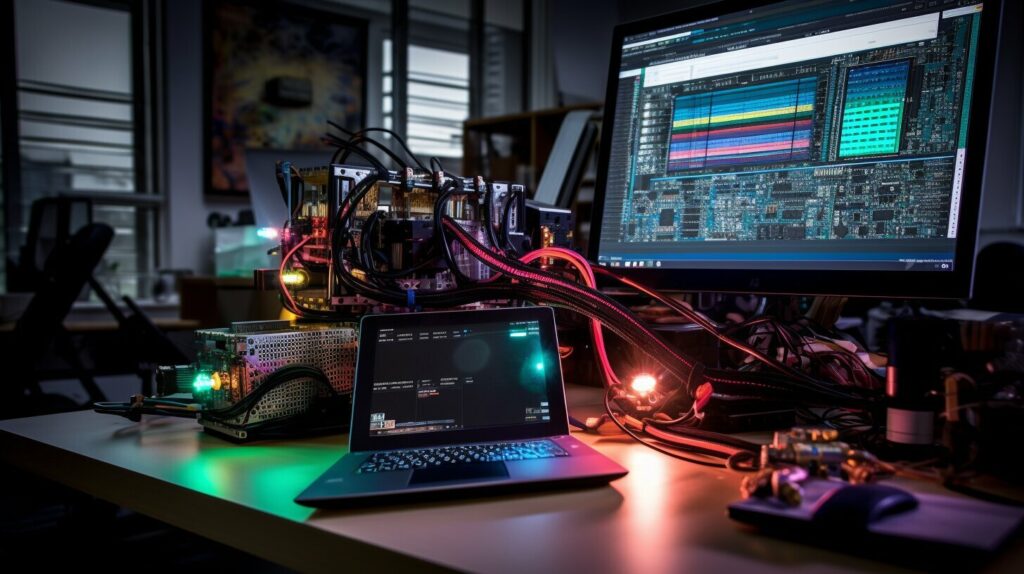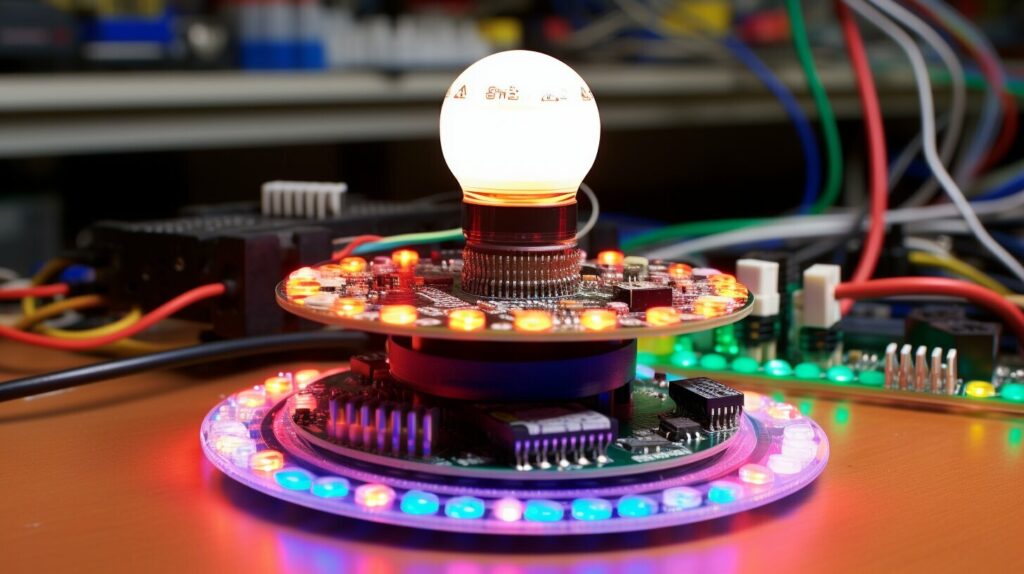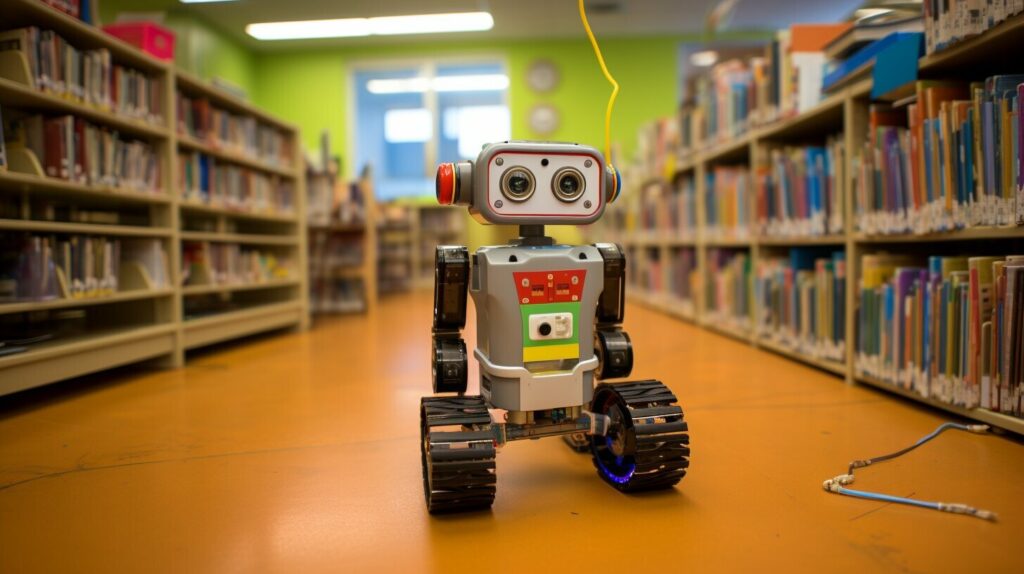Robotics and automation are rapidly growing fields that are transforming the way we live and work. One of the key technologies that have enabled this transformation is Arduino. Arduino is an open-source electronics platform that is widely used in robotics and automation projects due to its flexibility, accessibility, and extensive library support. In this section, we will explore the various advantages of implementing Arduino in robotics and automation and how it enhances the functionality of robots and enables efficient automation.
Key Takeaways
- Arduino is an open-source electronics platform that is widely used in robotics and automation projects.
- Arduino provides a flexible and accessible solution for building intricate robotic systems.
- Arduino offers a vast array of robotics projects that can be implemented by enthusiasts, professionals, and educators alike.
- An Arduino Robotics kit provides all the necessary components and modules required to build a robot.
- Arduino Robotics tutorials provide step-by-step instructions on how to build and program robots using Arduino.
- Arduino’s programming language enables users to write and upload code to their Arduino board.
- Arduino sensors enable robots to perceive and interact with their environment.
- Arduino libraries provide pre-written code that simplifies complex tasks and functionalities.
- The Arduino boards act as the central controller of the robot, processing sensory inputs and executing commands.
- Arduino Robotics workshops provide hands-on learning experiences for individuals interested in robotics.
Introduction to Arduino in Robotics
Implementing Arduino in Robotics brings numerous advantages to the field. But before discussing these benefits, it is essential to understand what Arduino is and how it serves as a valuable tool in Robotics.
Arduino is an open-source electronics platform that includes both hardware and software, making it an accessible solution for creating intricate robotic systems. Its wide range of compatible sensors, controllers, and libraries makes programming and building robots more convenient.
Arduino in Robotics is an essential tool for enthusiasts, professionals, and educators alike. It simplifies the process of creating and programming robots, enabling users to explore their creativity and turn their ideas into reality.
Arduino Robotics Projects
Arduino offers a vast array of robotics projects that can be implemented by enthusiasts, professionals, and educators alike. These projects range from simple obstacle avoiding robots to advanced autonomous drones. With Arduino, users can explore their creativity and bring their robotic ideas to life.
One exciting Arduino Robotics project is the “Line Follower Robot”. This robot uses infrared sensors to detect and follow a black line on a white surface. It is a popular project among beginners, as it allows them to learn about sensors, programming logic, and motor control.
Another interesting project is the “Gesture Controlled Robot”. This robot is controlled by hand gestures captured through a camera or an accelerometer. The user can navigate the robot’s movements by moving their hand up, down, left, or right.
For those interested in building flying robots, the “Quadcopter” project is an excellent choice. This project involves constructing a four-rotor helicopter that can be controlled remotely. It requires advanced knowledge of electronics, programming, and aerodynamics, making it an excellent challenge for experienced users.
Arduino Robotics projects can be found in various online repositories and forums, such as Arduino Project Hub and GitHub. These projects range in complexity and are often accompanied by detailed tutorials and code examples, making them accessible to users of all skill levels.
Whether it’s for educational purposes or personal interest, Arduino Robotics projects offer an excellent opportunity to explore and experiment with robotics. With a wide range of projects to choose from, users can find the perfect project to suit their interests and skill levels.
Arduino Robotics Kit
An Arduino Robotics kit provides an all-in-one solution for building robots. These kits include an Arduino board, motor drivers, sensors, actuators, and other peripherals required to create a functional robot. By using an Arduino Robotics kit, users can save time and effort in sourcing individual components, allowing for a more streamlined and efficient robotics project.
| Components of an Arduino Robotics Kit | Functions |
|---|---|
| Arduino Board | The central controller of the robot, processing sensory inputs and executing commands. |
| Motor Drivers | Control the motors of the robot, allowing it to move and perform actions. |
| Sensors | Allow the robot to perceive and interact with its environment through various means. |
| Actuators | Produce physical actions such as movement, allowing the robot to perform tasks. |
| Other Peripherals | Additional components that may include power supplies, cables, and mounting hardware. |
Arduino Robotics kits are ideal for both beginners and experienced users who want to build robots quickly and efficiently. The kit provides all the necessary components, and the user can focus on building and programming the robot instead of sourcing parts. Furthermore, using an Arduino Robotics kit ensures compatibility between components, reducing the risk of errors and simplifying the integration process.
Arduino Robotics Tutorial
If you’re interested in building and programming robots, then Arduino Robotics tutorials are a great place to start. These tutorials offer step-by-step guidance on creating custom robotics projects using Arduino components. They cater to both beginners and experienced users, providing a structured learning approach that covers the basics of electronics, programming, and robotics.
Arduino Robotics tutorials are available in various formats, including online guides, videos, and PDFs. They cover a wide range of topics, such as motor control, sensor interfacing, and wireless communication. Many tutorials also include sample code and circuit diagrams, allowing users to follow along easily and replicate the projects.
Some key benefits of using Arduino Robotics tutorials include:
- Structured learning approach that covers the foundations of robotics and programming.
- Access to a wide range of robotics projects, from simple to complex.
- Clear instructions with sample code and circuit diagrams.
- Flexible learning options, including online guides, videos, and PDFs.
Whether you’re a student, hobbyist, or professional, Arduino Robotics tutorials can help you acquire the skills and knowledge needed to build and program your own robots. They provide a fun and accessible way to explore the exciting field of robotics and automation.
Arduino Robotics Code
Arduino’s programming language, which is based on Wiring, enables users to write and upload code to their Arduino board. This code dictates the behaviour and functionalities of the robot. Arduino provides a user-friendly Integrated Development Environment (IDE) that simplifies code writing and debugging, even for those new to programming.
Using the Arduino IDE, users can write their own code or customize existing code to suit their specific robotic applications. The IDE includes features such as syntax highlighting, auto-complete, and error checking, making coding more accessible to beginners. Additionally, Arduino libraries provide pre-written code that simplifies complex tasks and functionalities, allowing users to integrate advanced features into their projects with ease.
- Arduino Robotics code
- Arduino code for Robotics
- Robotics code with Arduino
Whether you are a beginner or an experienced programmer, Arduino’s programming environment offers an intuitive platform for coding and programming robots. Arduino supports C/C++ programming languages, making it accessible to users with different programming backgrounds. With Arduino, users can not only build exciting robotics projects but also customize and program them to meet their specific requirements.
Arduino Robotics Sensor
Sensors are an essential component in robotics, allowing robots to perceive and interact with their environment. With Arduino, users have access to a wide range of compatible sensors, including ultrasonic sensors, infrared sensors, and gyroscopes. These sensors enable robots to detect obstacles, measure distances, and navigate their surroundings with precision and accuracy.
Ultrasonic sensors are widely used in robotics projects and are compatible with Arduino. They emit high-frequency sound waves and measure the time taken for the waves to bounce back, allowing the robot to determine distances to objects in its path. Infrared sensors are also popular in robotics projects and are used to detect obstacles as well. The Arduino community provides extensive support with tutorials and code libraries to work with these sensors
Gyroscopes are also essential sensors that enable robots to sense their orientation and rotations. Arduino Robotics sensors are compatible with a variety of gyroscopes that provide precise measurements across different axes. By incorporating gyroscopes into their robots, users can design robots that are capable of maintaining balance, stability, and agility during movement.
Arduino Robotics sensors are versatile and can be used in a wide range of applications, from simple line-following robots to complex autonomous drones. These sensors are simple to use with Arduino and can be easily connected to the board using jumper wires. By using sensors with Arduino, users can create robots that can perceive, navigate and adapt to their environment, greatly enhancing the functionality of their designs.
Arduino Robotics Library
Arduino’s robotics library is a vast collection of pre-written code, functions, and routines that simplify complex tasks and functionalities for robotic applications. These libraries contain a wide range of features that enable users to interface and communicate with various components, including sensors, motors, and communication modules, with ease. Developers can use the library to speed up the development process and reduce the amount of time and effort required to create a functional robot. The library also caters to different levels of expertise, from novice to expert robotics developers, thus making it accessible to everyone.
The Arduino robotics library includes a comprehensive set of tools such as motor control, communication protocols, and sensor interfacing. With these tools, developers can easily code and customize the functionalities of their robots. The library also offers a wide range of sample codes, tutorials, and projects that help developers to get started with coding and building their robotics projects quickly and efficiently.
One of the main advantages of using the Arduino robotics library is that it is open-source, allowing developers to modify and enhance the code base for their specific needs. The community-driven nature of the library also means that it is constantly evolving, with new modules and functionalities being added regularly. This ensures that developers can always find the latest and most relevant code samples and features to improve their robotics projects.
In conclusion, the Arduino robotics library is an essential resource for robotics developers. Its vast collection of pre-written codes, functions, and routines enables developers to create intricate and powerful robotics projects with ease. The library is constantly evolving, with new functionalities being added regularly, making it a valuable tool for both novice and expert developers.
Arduino Robotics Controller
The Arduino board serves as the central controller of the robot, processing sensory inputs and executing commands. Due to its wide range of input and output pins, Arduino can interface with various components such as motors, servos, and sensors. The flexibility of Arduino allows users to design and control robots with precision and efficiency. By utilizing the Arduino Robotics Controller, users can customize their robot’s behavior according to their specific needs and requirements.
Arduino provides an integrated development environment (IDE) that allows users to write and upload their code to the board. This code dictates the behavior and functionalities of the robot. The Arduino programming language is based on Wiring, and it supports C/C++ programming languages. The user-friendly interface simplifies code writing and debugging, even for those new to programming. By mastering the Arduino Robotics Controller, users can create robots that effectively interact with their environment and perform various tasks.
Arduino Robotics Programming
Programming a robot is a crucial aspect of creating a functional and efficient robotic system. This is where the power of Arduino comes into play in the field of robotics. Arduino programming can be done using the Arduino Integrated Development Environment (IDE), which offers a flexible and easy-to-use platform for writing and uploading code to the Arduino board. Arduino IDE supports C/C++ programming languages, making it accessible to both beginners and experienced programmers.
Arduino robotics programming involves writing code to interact with various components of the robot, such as motors, sensors, and controllers. The code dictates the behavior and functionalities of the robot, enabling it to perform tasks such as navigation, obstacle avoidance, and object detection.
Arduino provides a vast library of robotics code examples that can be readily incorporated into your project. These libraries contain pre-written functions and routines, simplifying complex tasks and functionalities. Arduino’s library collection caters to various robotics applications, such as motor control, communication protocols, and sensor interfacing.
Arduino robotics programming is a rewarding experience that allows enthusiasts to explore their creativity and bring their robotic ideas to life. With its user-friendly programming environment and extensive community support, Arduino makes robotics programming accessible to everyone, from beginners to experienced programmers.
Whether you are interested in hobby robotics or professional automation solutions, Arduino offers a versatile and accessible platform for creating and programming robots. With its range of compatible sensors, controllers, and libraries, Arduino simplifies the process of creating intricate robotic systems. Arduino robotics programming is an exciting field that offers endless possibilities for innovation and creativity.
Arduino Robotics Workshop
If you’re interested in learning more about robotics or want to develop your skills, attending an Arduino Robotics workshop is an excellent starting point. These workshops provide a hands-on learning experience that can help you gain practical skills and knowledge.
Arduino Robotics workshops cover a range of topics, including basic electronics, programming, and robot construction. They are designed to cater to both beginners and experienced enthusiasts. These workshops are an excellent way to learn from expert instructors, interact with like-minded individuals, and exchange ideas and insights.
Attending an Arduino Robotics workshop is an excellent way to gain exposure to the latest technology, gain valuable hands-on experience, and keep up with the latest trends and developments in the field. You’ll have access to all the necessary tools and equipment required to build and program robots, and you’ll be able to experiment with a variety of sensors, motors, and controllers.
By attending an Arduino Robotics workshop, you’ll develop problem-solving and critical thinking skills, learn how to program and code robots, and gain invaluable experience in the exciting field of robotics and automation. You’ll also have the opportunity to meet new people, make friends, and network with industry professionals.
Whether you’re a student, educator, or professional engineer, an Arduino Robotics workshop is an excellent investment in your personal and professional development. So why not sign up for one today and start building your own robots?
Conclusion
In conclusion, Arduino is an incredibly beneficial tool for robotics and automation. Its open-source electronics platform, coupled with its various sensors, controllers, and libraries, simplifies the process of creating and programming robots. Arduino Robotics projects provide a creative outlet for enthusiasts, professionals, and educators alike, allowing for the exploration of new and innovative ideas. With the availability of Arduino Robotics kits, users can streamline their robotics projects while following Arduino Robotics tutorials to gain the necessary skills and knowledge to bring their ideas to life.
Arduino’s programming language, user-friendly IDE, and extensive library collection make coding and programming an accessible task, even for those new to programming. The wide range of compatible sensors and input/output pins enable robots to detect obstacles, measure distances, and navigate their surroundings efficiently. By acting as the central controller of the robot, Arduino allows for the execution of commands with precision and efficiency.
Participation in Arduino Robotics workshops provides a hands-on learning experience that allows individuals to acquire practical skills and interact with like-minded enthusiasts. Overall, utilizing Arduino in robotics and automation enhances the functionality of robots, creates innovative automation solutions, and contributes to the advancement of this exciting field.

